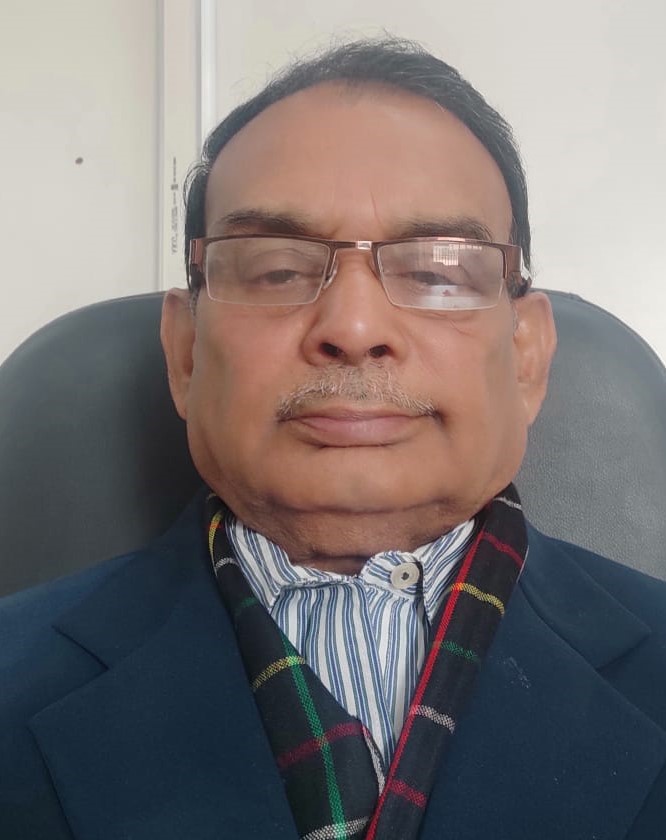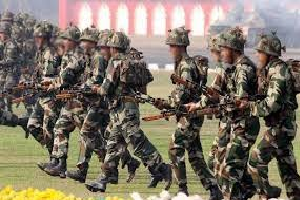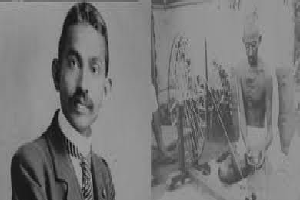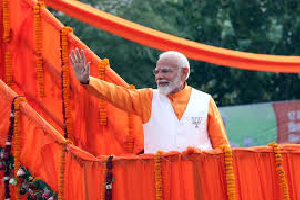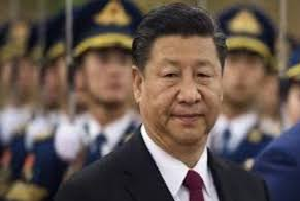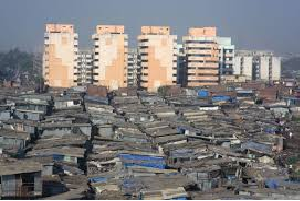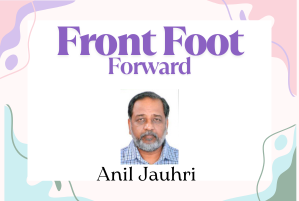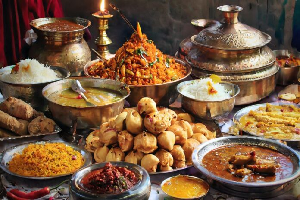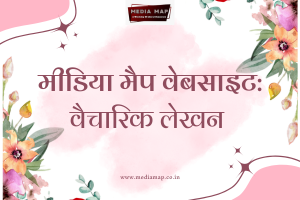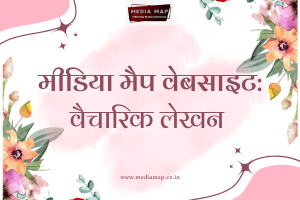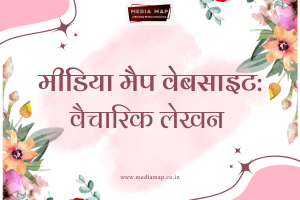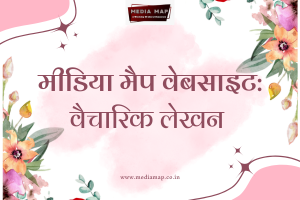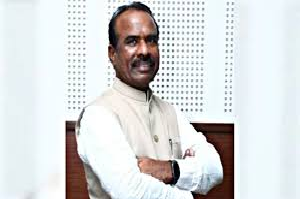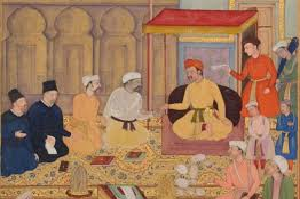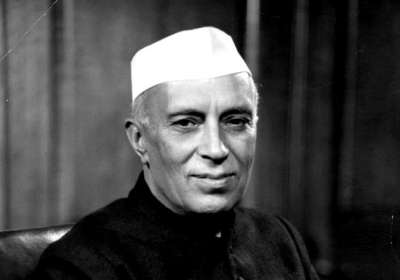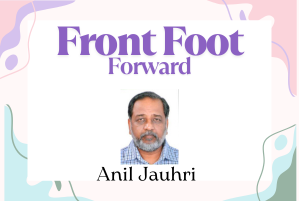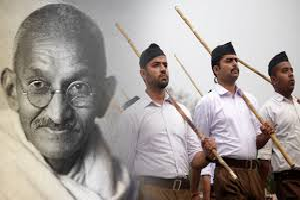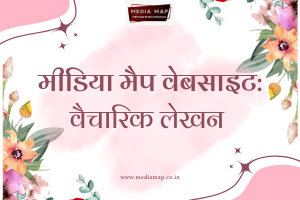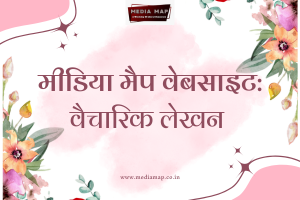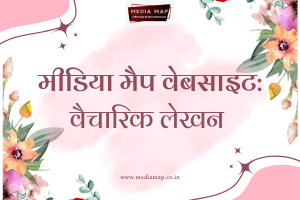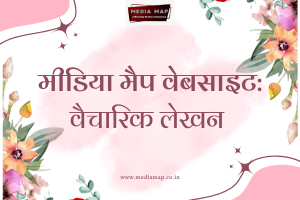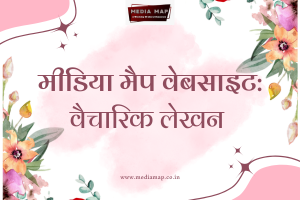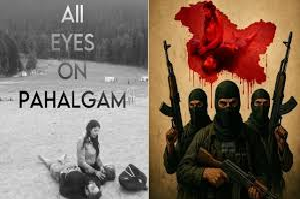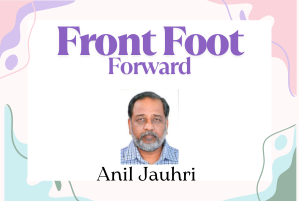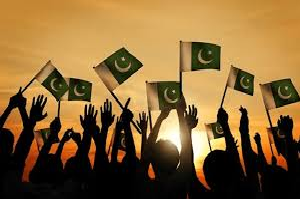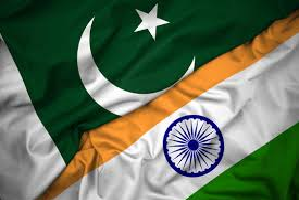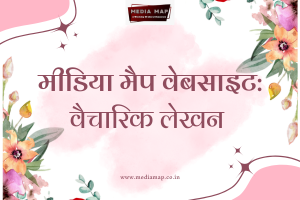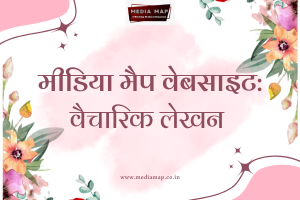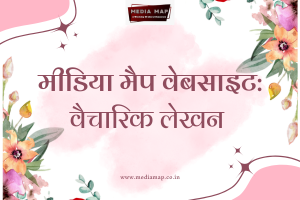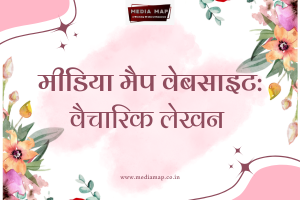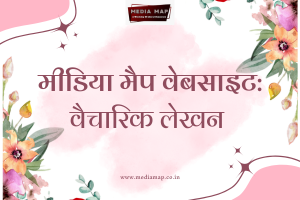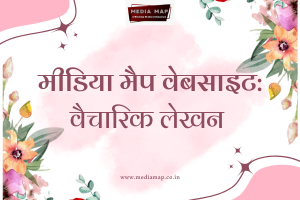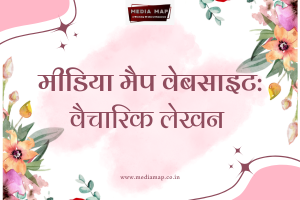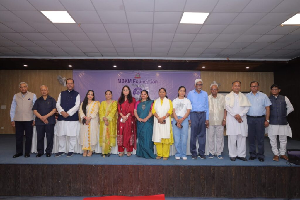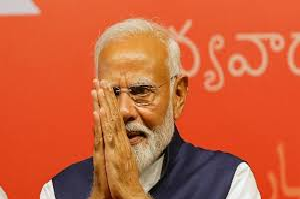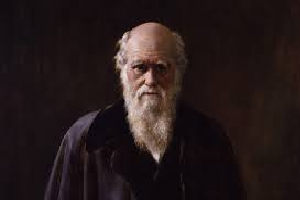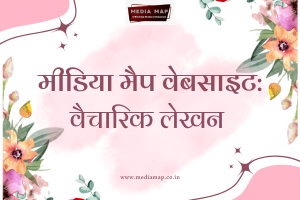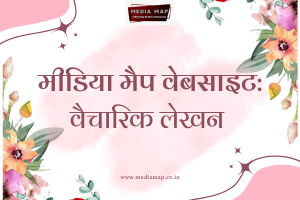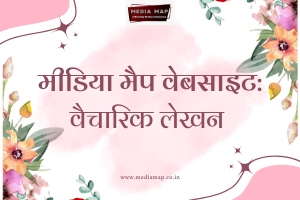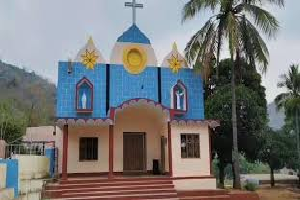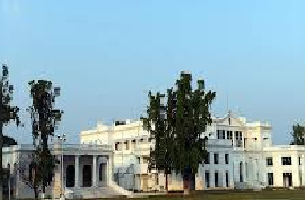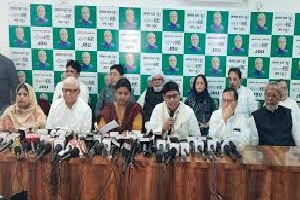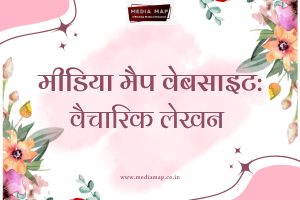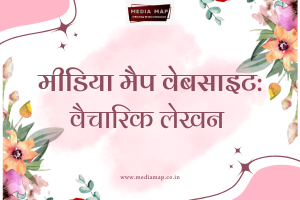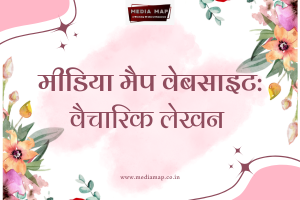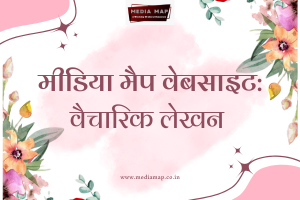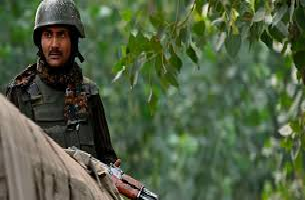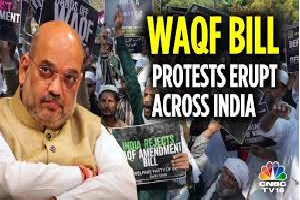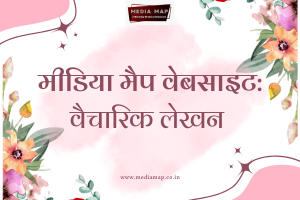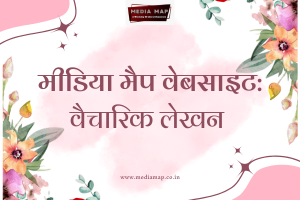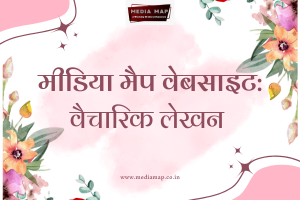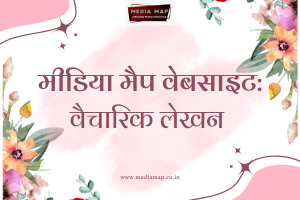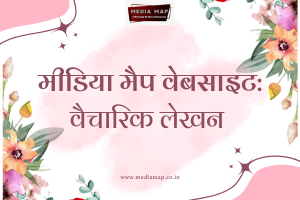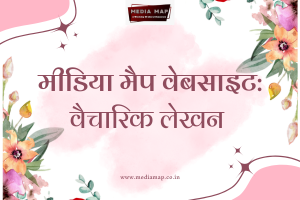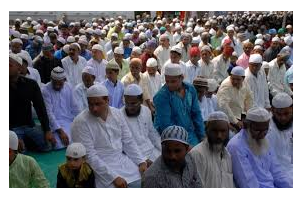7

Prof Shivaji Sarkar
New Delhi, 7 June 2024
Coalitions better suit this country of vast diversities as they allow all voices to be heard. The BJP leaders' overemphasis on religion, anti-Muslim rhetoric, and offensive outbursts have backfired. The Lok Sabha's composition has shifted significantly in three states of UP, West Bengal and Maharashtra. It now faced heavy setbacks in UP and Maharashtra. In West Bengal BJP came down to 11 seats engaging in conflicts with TMC workers even on polling day.
Democracy survives in this country because of the innate wisdom of the ordinary common people.
The Samajwadi Party with 37 seats has emerged as the largest party. Along with six by its Congress ally, the total UP tally is 43 for INDIA. The BJP which aimed at winning 80, is satisfied with a mere 34 with many of its central and state ministers losing. Voters in areas around Ayodhya have done the unthinkable. They voted against excesses for Ram temple construction by acquiring 64 acres of extra land for the temple, demolishing thousands of houses, shops temples, and structures with impunity. Many have half of the houses and shops broken for the Ram Path. Most say that even before there were wide roads for reaching the temple, and wonder why the BJP government went for demolitions.
Article at a Glance
The recent elections in India have shown that coalitions are a natural fit for the country's diverse population, allowing all voices to be heard and rejecting hatred and divisive rhetoric.
The BJP's emphasis on religion and anti-Muslim sentiment has backfired, leading to significant losses in Uttar Pradesh, West Bengal, and Maharashtra. The Samajwadi Party has emerged as the largest party in Uttar Pradesh, while the Trinamool Congress has retained its stronghold in West Bengal.
In Maharashtra, the Shiv Sena (Uddhav Thakre) has emerged as the real winner. The elections have proven that democracy thrives when all voices are heard and that coalitions are a more natural fit for India than one-party rule. The people have rejected hatred and divisive politics, opting for a more inclusive and democratic approach.
Some in Ayodhya even question why a government should be involved in temple construction. The interior areas of Ayodhya tell the tale.
Neither Varanasi has been an exception. The BJP nominee Prime Minister Narendra Modi won it by over 3 lakh votes in 2019. This time the slogan was 10 lakh se jeetna hai. But Ajay Ray, Congress candidate of INDIA alliance made him trial on some occasions, at neck-to-neck several times, finally he could get over with 1.52 lakh votes.
Even Sitapur connected to Sita, not far off Ayodhya, elected an unknown Congressman Rakesh Rathor.
All these places had voted with vengeance against the highhandedness they suffered. Ganga remains as dirty as it was ten years before in Banaras. But the temple town which had varied temples of Shiv, Ganesh, and other mandirs of several deities was razed for a beautification corridor that the locals never wanted. Even the main Vishwanath temple was not spared. It had images of other deities they were all demolished to give it a new look. These 5000 temples and shops were the family livelihoods. They never expected to suffer from a Hindu party. Even a Muslim ruler did not do it.
Asked if they were acting like Aurangjeb, some senior BJP leaders replied
“he was the ruler then, now we are, would do whatever we can”. The electorate did what they could. Chitrakoot and Vindhyachal repeated it vengefully for similar “beautifying corridors”.
The Ram mandir had limited influence. Allahabad, the city named after Vaivaswat Manu’s daughter Eela, from where Ram walked to Chitrakoot today is in a sorry state. For no rhyme or reason, Eelahbad name was changed. Over 100-year-old houses were razed or partially demolished to create roads for toll or Kumbh Mela. Arbitrary actions have given the city a devastated look. The BJP leaders told citizens, “Modiji ne kaha hai to hoga hi” – that was the guarantee.
Most demolition agents were related to one or the other BJP leaders or their friends in a distant western state.
The issue of Ram historically had never helped the BJP. In 1989, when the BJP was agitating for sanyas, it lost the UP state assembly elections. In 1992, when they demolished the temple structure as Hindus called it since 1949, which the BJP called a disputed structure, the BJP lost power for the next six years. As of now through a judgment based on continued occupation of a premises, the temple is coming up, the Pran Pratistha of not bal (infant) Ram but a balak (child) Ram is not taken kindly by Ayodhya residents.
More so Ayodhya residents get interned in their homes to ensure VIP security whenever celebrations like Pran Pratistha or others take place. They wonder where the infant Ram image has vanished.
Not less is the grudge of locals in Ayodhya, Allahabad, Vindhyachal, and Chitrakoot for loss of livelihood for such brazen shows of muscle power and ill-treatment. Visiting the temple is more difficult than an airport. It takes a 45-minute walk and scrutiny by policemen. No one can enter without an Adhaar. No wonder footfall has fallen to less than a thousand now. And everybody wants to view a balak Ram. Would the new idol be changed?
Kalighat takeover
Even before the polls began, observers assessed severe losses for the BJP in West Bengal for unemployment, rapid price rises, magnifier, and other issues. This was added by the friction within the BJP fold. The BJP leaders were fighting more against themselves than with Mamata Banerjee’s Trinamool. It was not an easy challenge for Mamata Banerjee and protect the Bengali pride. She effectively did it by launching her campaign for BJP-humiliated Mohua Maitra from Krishnanagar. The BJP tried to turn it into a VIP constituency by pitting an unknown Rajmata of the Krishnanagar royal family of Maharaja Krishnachandra Roy, who had invited Lord Clive to defeat the Bengal Nawab, Sirajuddaullah, and spread the royal carpet for the East India Company Englishmen to consolidate their rule.
The Krishsnanagar ploy not only did not work, but it also became Waterloo for the BJP. Its tally came down from 18 to 11. Many ministers like Subhash Sarkar, former state party chief Dilip Ghosh, and Sandeshkhali supposed rape victim Rekha Patr lost at the hustings.
Sandeshkhali was hyped up. It was busted by Mamata as fake and people believed her.
The famous Kalighat temple supposedly one of the 51 shakteepeths also became a poll issue. A business house from Ahmedabad has reportedly illegally taken it over. It hurts the Bengali psyche.
Maharashtra was another waterloo where the Shiv Sena (Uddhav Thakre) emerged as the real Sena. Along with Uddhav, Sharad Pawar, and the Congress, the opposition won 30 of the 48 seats. While BJP had to cut a sorry figure. Maharastrians have proved that Uddhav Thakre is the real party. Even Muslims in large numbers did not mind voting Uddhav and Shiv Sena (UT) voted for the Congress. Their vote was against betrayal by the elected leaders Eknath Shinde, Ajit Pawar, and BJP which rocked the BJP-Sena alliance.
The recent polls prove that hatred, name-calling, and below-the-belt statements by the mighty have no place in the electoral fray. Nobody is an enemy. They are just rivals. In a democracy, there is no authoritarian leader. All are equal. It also proves that a coalition is more natural in this country than a one-party rule.
---------------
